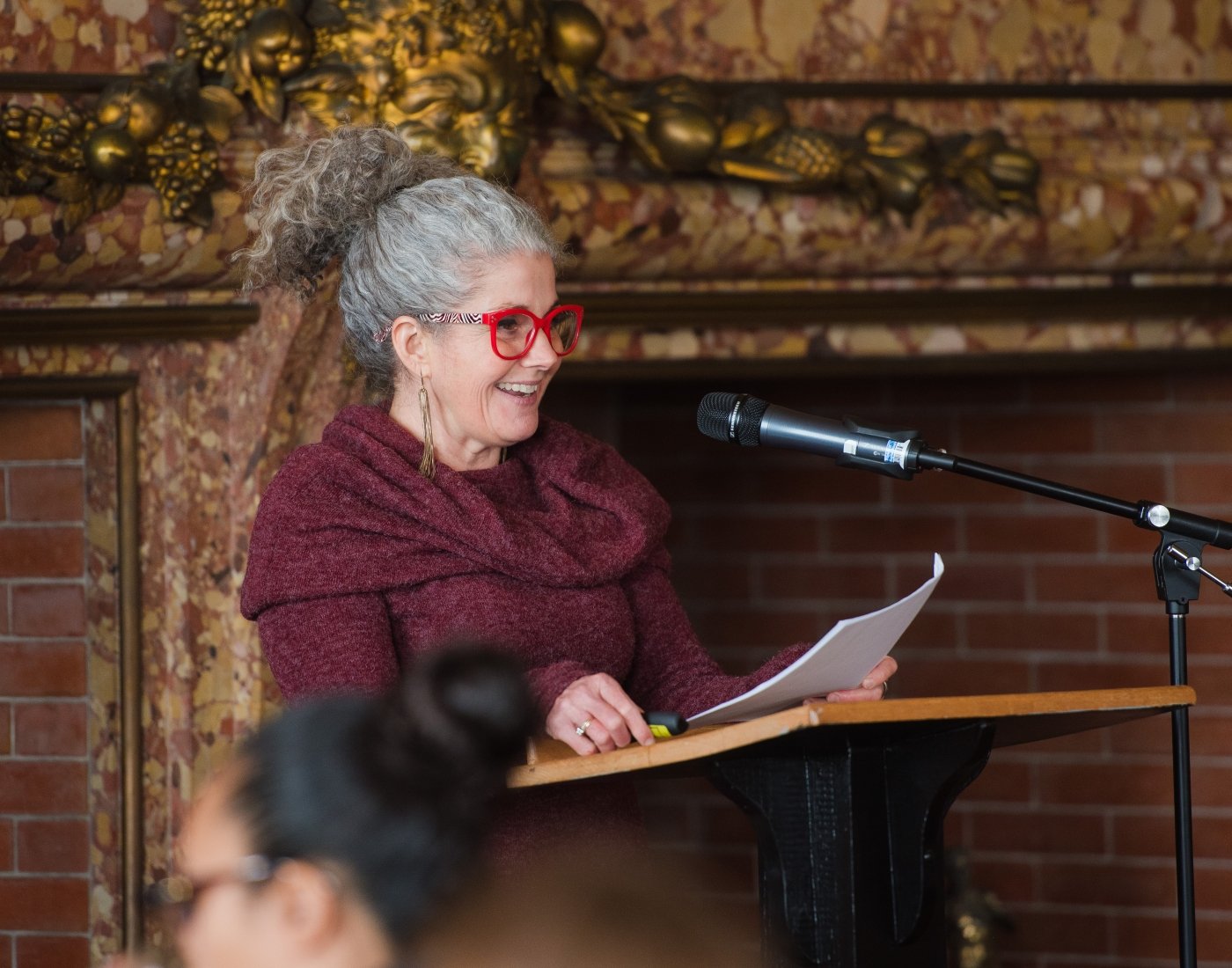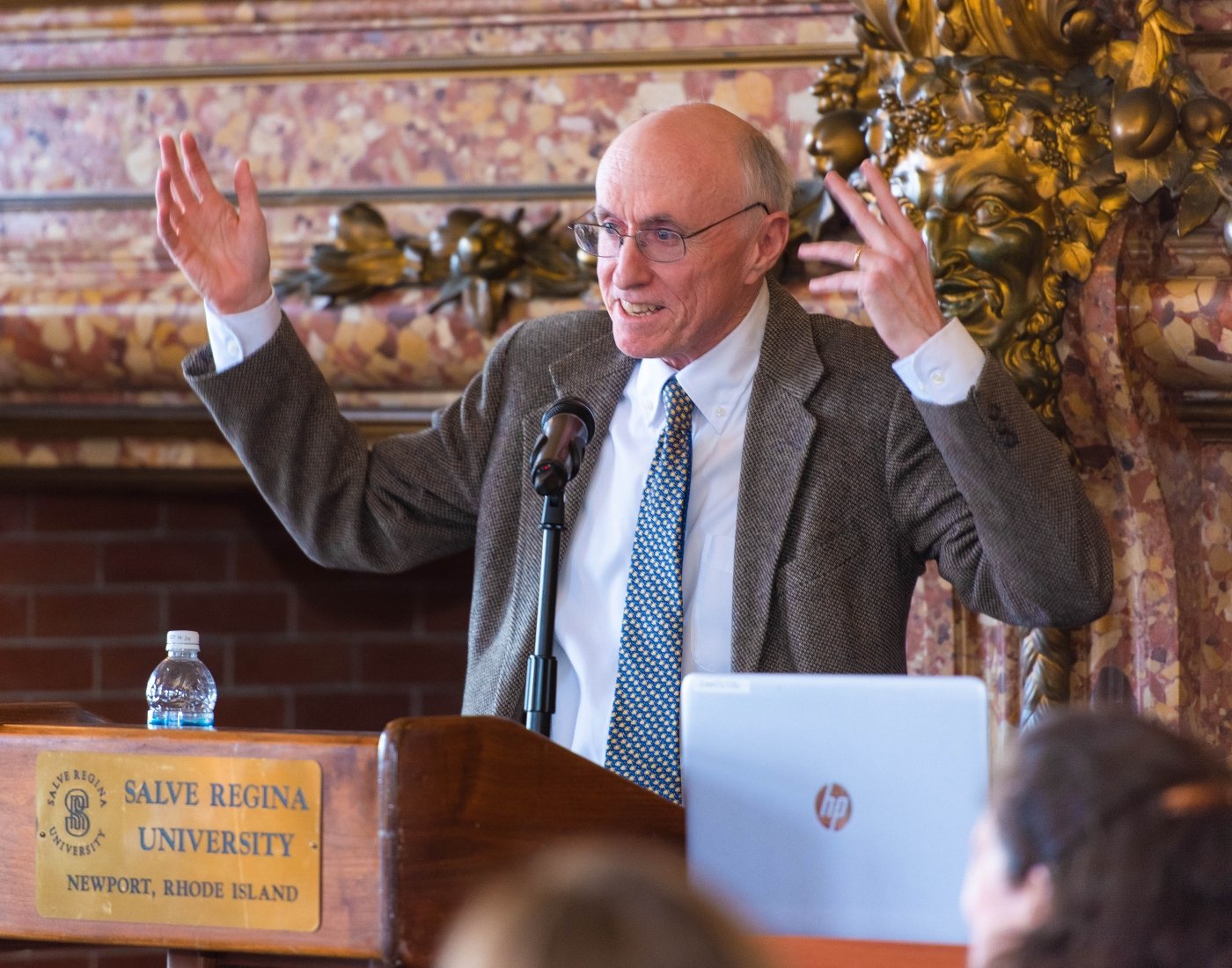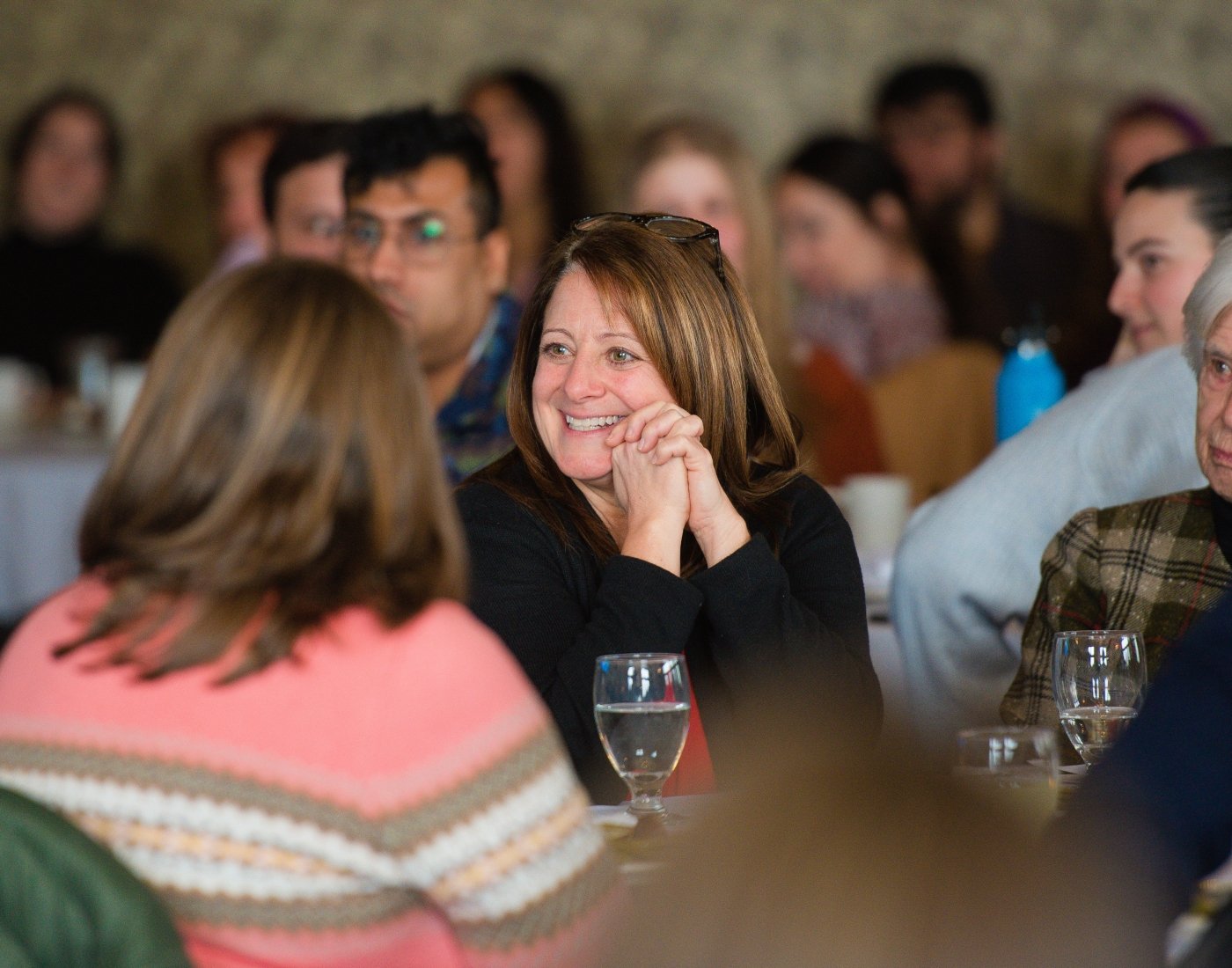
McAuley Institute for Mercy Education

The McAuley Institute for Mercy Education advances the vocation of Salve Regina University through the development of interdisciplinary research, teaching and leadership initiatives that foster an ethic of dialogue, reflection and action around the tradition and critical concerns of mercy to contribute to the development of Catholic higher education in the 21st century.
Voices of Mercy
Each year, the McAuley Institute invites members of the campus community to reflect on their vocational journey as a person of mercy, responding to the question: “What matters to me and why?" Past speakers include President Kelli J. Armstrong and Chancellor M. Therese Antone, RSM, as well as Dr. Anthony LoPresti, professor of religious and theological studies; Dr. John Quinn, professor of history; Dawn Emsellem-Wichowski, director of library services; and Dr. Letizia Gambrell-Boone, vice president for student affairs.

Mercy Faculty Forum
The Mercy Faculty Forum is a four-part mission integration series for each cohort of new faculty to engage resources from the mercy, Catholic tradition and reflect together on their own vocations as teaching scholars within the landscape of mercy higher education. Throughout the series, faculty are invited to discuss shared readings and consider the ways in which their own research, teaching, service and leadership contribute to and advance Salve's mission.

Leading With Mercy
Leading With Mercy is a mission integration professional development series for staff and administrators to engage resources from the Catholic and mercy traditions and cultivate practices of mercy leadership across our campus community. Through monthly gatherings with a group of interdepartmental colleagues, participants discuss shared readings, learn about the work of the University across areas, and renew their own vocational and professional priorities rooted in Salve’s mission.

Mercy Interdisciplinary Faculty Collaboratives
Two-year interdisciplinary faculty collaboratives advance research, teaching and University initiatives that address the Critical Concerns of the Sisters of Mercy and contribute to the mercy, Catholic vocation of Salve. McAuley Scholars each receive a grant to support a research or teaching initiative, engage student fellows, and convene in regular interdisciplinary seminars to advance this work.
Immigration Collaborative
Dr. Yvan Ilunga
Assistant professor, Department of Political Science and International Relations
Initiative: The Diaspora and the Complexity of Peacebuilding
Dr. Hyoyeun Jun
Assistant professor, Department of English, Communications and Media
Initiative: Salve Immigrant Students' Mental Health and De-Stigmatization
Dr. John Quinn
Professor and chair, Department of History
Initiative: Asian American Immigrant History
Dr. Myunghoon Roh
Assistant professor, Department of Criminal Justice and Criminology
Initiative: Juvenile Delinquency in Context of Emigration and Immigration in the Western Balkan Countries
Dr. Norman Rusin
Lecturer, Department of Modern Languages
Initiative: Women, Migrations and Italian Food Cultures
Dr. Emily Colbert Cairns
Associate professor and chair, Department of Modern Languages
Initiative: The Sephardic Diaspora: Women of the Mallorcan Chueta Community
Women and Gender Collaborative
Dr. Esther Alarcon-Arana
Associate professor, Department of Modern Languages
Initiative: ¡Las Chicas Son Guerreras! Mujeres y Música Consciente en la España Contemporánea
Dr. Belinda Barbagallo
Associate professor, Department of Biology and Biomedical Sciences
Initiative: Risks of PFOS Exposure in Pregnancy: A Public Health Outreach Campaign
Dr. Victoria Gonzalez
Assistant professor, Department of Cultural, Environmental and Global Studies
Initiative: Examining Gender Roles
Dr. Donna Harrington-Lueker
Professor, Department of English, Communications and Media
Initiative: Developing a New Course: "Life-Writing: Women and Autobiography"
Dr. Kathleen Muirhead
Assistant professor, Department of Counselor Education and Expressive Arts
Initiative: Counseling and Gender: Examining Human Development Through a Non-Binary Gender Lens
Dr. Tara Brooke Watkins
Assistant professor, Department of Music, Theatre and Dance
Initiative: The Strindberg Experiment
Publications
The Catholic Intellectual Tradition
A two-year project fostered by the Office of Mission Integration, "The Catholic Intellectual Tradition" explores the mutual correlation between faith and reason, a sacramental vision affirming the potential of an academic discipline to reveal the sacred, reverence for the dignity of each human being as one created in the image of God, and openness to the mystery inherent in an evolving, unfinished creation.

Echoes of Mercy
Created by members of the Salve community, this poetry collection highlights mercy as an ideal, experience or practice. Each poem's powerful word images portray thoughtful reflections and shine creative light on the concept of mercy.

Mercy Illuminates
The title of this volume of essays, "Mercy Illuminates," is taken from a symposium held in 2008 in celebration of Salve's 60th anniversary. While most of the essays were presented that day, the epilogue is a paper presented by the late Sister Leona Misto at the 2008 Conference of Mercy Higher Education.

Themes of Catholic Social Teaching
Modern Catholic social teaching has been articulated through a tradition of papal, conciliar and episcopal documents. The depth and richness of this tradition can be understood best through a direct reading of these documents. In a series of brief reflections, several of the key themes that are at the heart of Catholic social tradition are highlighted.
Mercy and the Catholic Intellectual Tradition
In 2014, the Office of Mission Integration called for papers on the topic of "Mercy and the Catholic Intellectual Tradition." Three faculty abstracts were selected and resulted in a presentation at a 2015 symposium.

Living Mercy
A collection of essays, that honor the sense of vocation and this spirit of mercy that has enlivened and guided the University for the last 75 years. Inspired by the accomplishments of the past and looking forward to the call of the future, these essays provide a starting point for University-wide conversations to support Salve in discerning how it will move into the increasingly complex challenges of the future.

